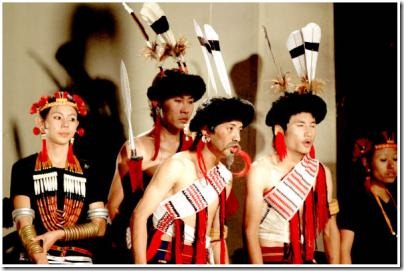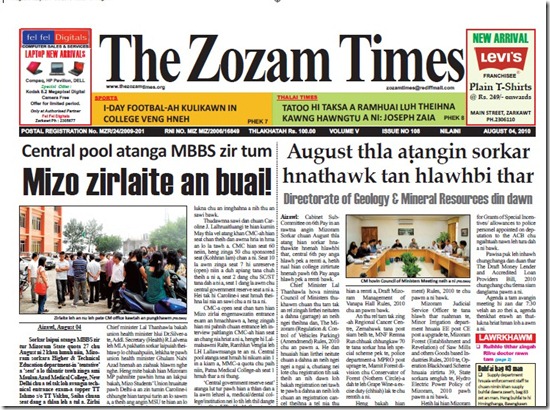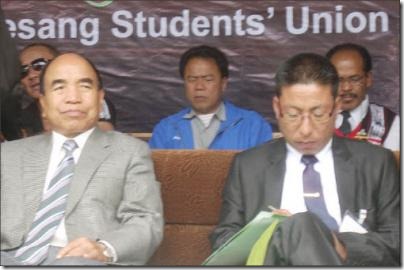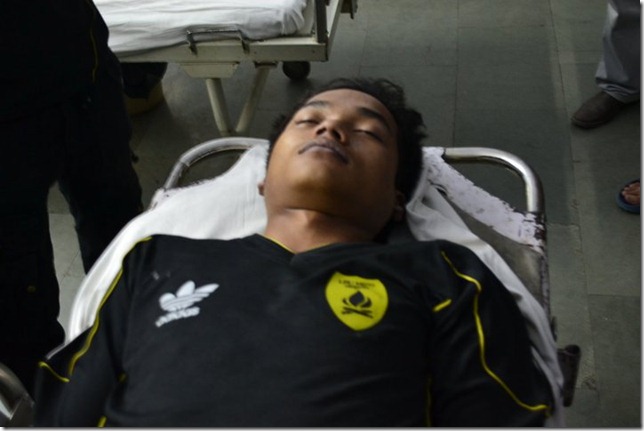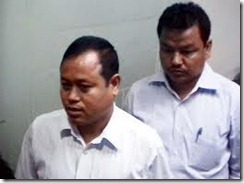By R Shankar
An upright officer, Gen V K Singh has been caught on the wrong foot by having two dates of birth; a lobby at work?

Very few get to celebrate two birthdays in a year; and all of them who do so are on the wrong side of the law.
India's Army chief General V K Singh has found himself on this dubious list. He was born on May 10, 1950 and 'reborn' a year later, leaving the Defence Ministry stumped and embarrassed.
Gen Singh has two different dates of birth (DoB) in the official records of the Army. So what is the big deal, one may ask. But this has led to a succession war in the Army. According to the May 10, 1950 DoB, Gen Singh has to retire next month; but if the Army goes by the second DoB, he will serve one more year as Chief of Army Staff.
There is a twist to the tale. Why is Gen Singh fighting it out? Sources say that a lobby is at work to discredit him. It was this lobby that was behind some of the land scams that Singh had unearthed. It may be recalled that it was Gen Singh who went behind senior Army officers involved in the Sukna land scam in West Bengal and the Adarsh Society flat scam in which Gen Deepak Kapoor was also allegedly involved. The flats meant for Kargil widows were cornered by senior Army officers and in collusion with bureaucrats in Maharashtra.
The succession war goes this way: If Gen Singh retires in May 2012 (with 1950 being accepted as his year of birth), then Eastern Army commander Lt-Gen Bikram Singh will succeed him. But if it is 1951, Gen Singh will retire only in March 2013 and the Northern Army commander Lt-Gen K T Parnaik would be his likely successor.
This has thrown the world's second largest army into confusion, disarray and dismay. Now the files are on the tables of the defence ministry.
The ministry has now sought clarifications from the Army record-holders. Since it is a sensitive issue that could create an unsavoury precedent, the ministry has asked the Army to explain the full ramifications keeping in context the legal issues, chain of succession and other implications if Gen Singh's DoB is fixed as May 10, 1951.
Gen Singh's birth certificate, rather certificates, cropped up in May 2006 when the Military Secretary's (MS) branch found two dates popping up in its official records. The Army chief has been maintaining that his DoB was May 10, 1951. This is reflected in his confidential reports and service record. But in other documents, the year is shown as 1950.

On May 3, 2006, the then military secretary, Lt Gen Richard Khare, asked Singh "to reflect the correct date of birth, which is May 10, 1950" in his records.
Sources say Singh then gave a written commitment accepting 1950 as the right year. He had made this commitment to the then army chief, Gen Deepak Kapoor, according to documents published by the media.
Singh wrote to his boss: "I have learnt of some misgivings and doubts being raised on my commitment given on my date of birth (May 10, 1950) as per your directions... I once again reiterate that my commitment to you stands."
It was only after this commitment was made that Singh's case was processed for being appointed as army commander.
Singh had also replied to Richard Khare saying: "The date given in the UPSC form was filled as per details given by the school clerk and the same was subsequently maintained till the original certificate was received. In the absence of the original certificate the error made due to what the clerk gave continued."
The case was then shut in 2008. But it was a Right to Information (RTI) query, after he took over as Army Chief, that led to the reopening of the file.
Where Singh would face an embarrassment is with regard an Army rule. The Army rules stipulate that any change in DoB must be made within TWO years of joining service. This was not done.
He had claimed that he tried to get his DoB corrected in 1985 and 2002 as per records maintained by the Adjutant General's branch. But he was told in August 2006 that army rules did not allow any corrections after two years of joining service and his case could not be processed at such a late stage.

In 2007, he brought up the issue again and the Army stuck to the original ruling. The then military secretary Lt Gen PR Gangadharan, stated in a confidential letter dated December 20, 2007, that "as per available records the officer (Singh) had not taken up any case for correction of his DoB prior to intimation by the MS branch in May 2006."
Following the line of argument taken by his predecessor Gen Khare, Gangadharan ruled that Singh's DoB should be considered to be May 10, 1950, for the purpose of promotion and retirement. He argued that any correction would be legally unsustainable and would give rise to similar claims by others.
Again, in 2009, Singh sought clarifications on the DoB issue from the MS branch and he was politely reminded of his commitment, which he promised to honour.
With so much mud-slinging going on, the issue was referred to the Law Ministry for an opinion. The ministry gave a strange opinion that has raised many eyebrows. On February 14 this year, the ministry said that the May 10, 1950 entry appears only in Singh's National Defence Academy (NDA) form. And then came the surprise. Going on to defend Singh, the ministry said the NDA form was probably filled out by "somebody else than the applicant".
This means that Gen Singh did not fill the NDA entry form and someone else did!
But according to documents in the public domain, it is not just the NDA form that reflects 1950 as the DoB. Singh's application form for admission to the NDA, , the Indian Military Academy dossier, the Army List and Recruiting Branch particulars verified by the Intelligence Bureau have the DoB as May 10, 1950.
Source: India Syndicate





